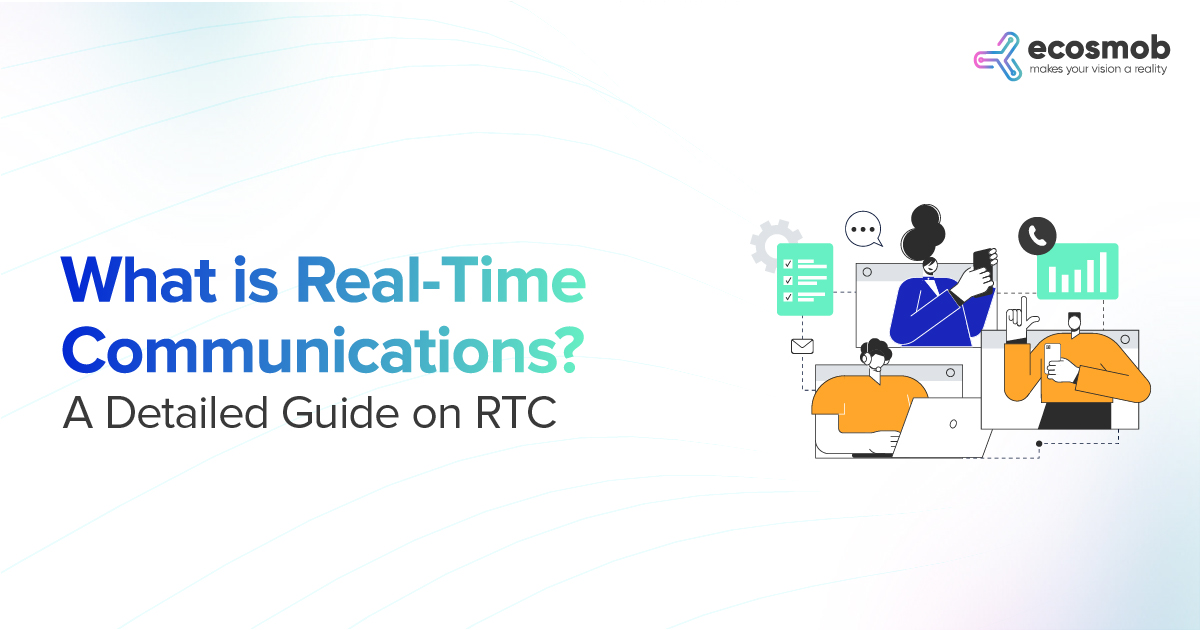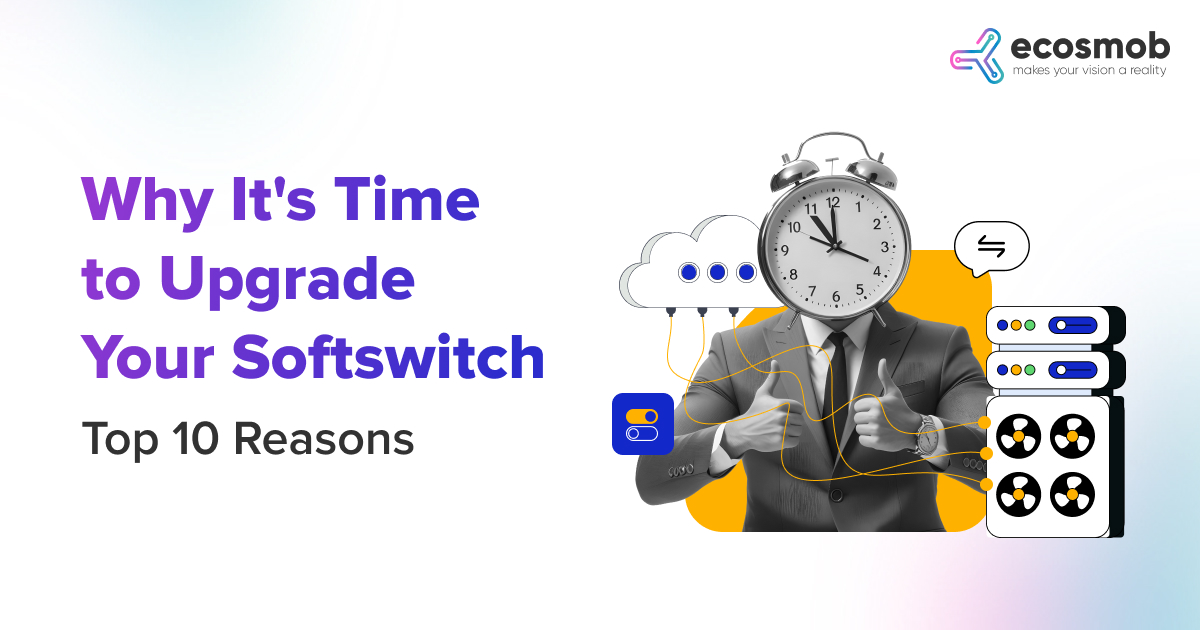The VoIP industry trends are rapidly evolving, marking VoIP with groundbreaking advancements. In 2024, we expect significant changes driven by cloud computing, AI integration, and a relentless pursuit of enhanced user experience. This blog explores the top VoIP trends for 2024, highlighting how they will redefine digital communication.
1. Continued Growth of Cloud-based VoIP
The VoIP market trends show that cloud-based VoIP systems, or hosted VoIP, are on the rise. 2024, we anticipate this trend to continue, driven by the cloud’s scalability, flexibility, and cost-effectiveness. Integration with other cloud services is critical, making cloud-based VoIP phone systems more interconnected and efficient.
- Scalability and Flexibility: Cloud-based VoIP solutions provide unparalleled scalability, enabling businesses to adjust resources as per demand. This flexibility extends to geographical expansion, allowing seamless integration across global offices.
- Cost-Effectiveness: Cloud-based VoIP significantly reduces capital expenditure and ongoing maintenance costs by eliminating the need for extensive on-premises hardware.
- Integration and Collaboration: Enhanced integration with other cloud services, such as CRM systems and productivity tools, streamlines communication workflows, fostering better collaboration.
- Disaster Recovery and Uptime: Cloud-hosted VoIP offers superior disaster recovery capabilities and higher uptime percentages than traditional systems, ensuring business continuity.
2. Increased Adoption of Unified Communications (UC)
Unified Communications (UC) integrates various communication tools into a single platform: voice, video, messaging, and collaboration features. As businesses increasingly seek streamlined, efficient communication channels, the adoption of UC is expected to accelerate in 2024. This trend aligns with Grand View Research’s projection of the worldwide unified communications market growing at a 17.4% CAGR from 2023 to 2030.
UC systems enhance collaboration, improve productivity, and are becoming essential for businesses navigating the complexities of modern communication.
- Streamlined Communication Platforms: UC combines email, voice, video, and messaging into a unified platform, eliminating the need for multiple communication tools.
- Collaboration Enhancement: UC systems, integrating tools like video conferencing and instant messaging, facilitate efficient teamwork and real-time collaboration. This is especially critical in remote and hybrid work setups.
- Customization and Flexibility: Tailored to meet diverse business needs, UC systems offer customization options that adapt to specific workflows and user preferences.
- Analytics and Reporting: Advanced UC solutions provide analytics and reporting features, giving businesses valuable insights into communication patterns and helping optimize operations.
3. Rise of WebRTC
WebRTC, or Web Real-Time Communication, enables real-time communication directly within web browsers without additional plugins. This open-source technology is gaining traction in VoIP solutions, making voice and video calling more accessible and integrated into web applications. Its adoption in VoIP applications simplifies communication and offers new opportunities for user engagement.
- Easy Access and Communication: WebRTC enables users to initiate voice and video communication directly from their web browsers, streamlining the user experience by removing the need for additional downloads or installations.
- Enhanced User Engagement: By embedding communication capabilities directly into websites and applications, WebRTC enhances customer engagement, which is particularly useful in customer service and e-commerce environments.
- Cross-platform Compatibility: Offering compatibility across different platforms and devices, WebRTC is instrumental in reaching a broader user base and making communication more inclusive and accessible.
- Improved Security and Privacy: WebRTC incorporates robust security features, ensuring encrypted communication and enhancing user privacy in real-time interactions.
Stay ahead of the curve with innovative custom VoIP Solutions!
4. IoT and 5G Integration in VoIP
The integration of the Internet of Things (IoT) and 5G technology in VoIP is set to revolutionize communication systems in 2024. This convergence is expected to unleash new capabilities in VoIP, offering unparalleled efficiency, reliability, and opportunities for innovation.
- Enhanced Network Efficiency and Speed: 5G networks deliver substantially faster speeds and reduced latency than their predecessors., which is crucial for the real-time data transmission required in the future of VoIP communications. This ensures clearer, more reliable voice and video calls with minimal disruption.
- IoT Integration in VoIP: Integrating IoT with VoIP opens up many possibilities for automated device communications. This integration allows smart devices to make VoIP calls or send alerts, facilitating new applications in various sectors like smart homes, industrial automation, and healthcare.
- Improved Capacity and Coverage: 5G networks offer greater capacity and coverage, enabling VoIP services to be more widely accessible even in densely populated areas or regions with traditionally weak connectivity.
- Advanced VoIP Features: The combination of IoT and 5G paves the way for advanced VoIP features like enhanced mobility, better security protocols, and more efficient network management, improving overall user experience.
- Innovative Use Cases: With IoT and 5G, VoIP can be integrated into multiple applications, from emergency response systems and remote monitoring to smart city infrastructure, thereby transforming how communication and information are managed across multiple domains.
Read More: Top 10 Best IVR Solutions for 2024
5. Integration with Artificial Intelligence (AI)
AI is transforming VoIP in various ways, from speech recognition and Natural Language Processing (NLP) for voice-activated dialing and call transcription to AI-powered chatbots for customer service. AI’s role in automated fraud detection contributes to VoIP Security enhancements.
- Voice-Activated Services: AI advancements have led to more sophisticated voice recognition, enabling hands-free operation and voice-activated dialing, making interactions more intuitive and efficient.
- Automated Customer Service: AI-powered chatbots and virtual assistants integrated into VoIP systems provide rapid and accurate responses to customer inquiries, enhancing the overall customer service experience.
- Fraud Detection and Security: AI algorithms are increasingly used to analyze call patterns and detect anomalies, providing an additional layer of security against fraudulent activities and unauthorized access.
- Personalized Experiences: AI is leveraged to offer customized communication experiences, tailoring responses and services based on user behavior and preferences.
6. Increased Focus on Security
VoIP Security is a growing concern as VoIP becomes integral to business operations. VoIP providers are responding with more robust security measures, including advanced encryption, authentication protocols, and comprehensive vulnerability management, to protect against data breaches, eavesdropping, and other threats.
- Robust Encryption and Privacy: VoIP solution providers are implementing advanced encryption protocols to ensure that communications remain secure and private, protecting against interception and eavesdropping.
- Continuous Security Updates: VoIP systems receive regular updates and patches in response to evolving threats, addressing vulnerabilities promptly to maintain high-security standards.
- User Authentication: Advanced biometric and multi-factor authentication methods are becoming commonplace in VoIP systems, ensuring access is restricted to authorized users only.
- Network Security: Emphasis on securing the underlying network infrastructure against attacks and unauthorized access is a priority, with VoIP providers deploying sophisticated network monitoring and defense mechanisms.
7. Adoption of SIP Trunks
Session Initiation Protocol (SIP) trunking is becoming popular as it connects VoIP systems to the public switched telephone network (PSTN). SIP trunking offers cost savings, scalability, and enhanced reliability compared to traditional analog trunks. Its adoption reflects the growing need for efficient and flexible communication solutions.
- Cost Reduction: SIP trunking significantly reduces costs by removing the necessity for traditional phone lines and lowering call expenses, especially for long-distance and international calls.
- Enhanced Business Continuity: Offering better reliability and redundancy, SIP trunks ensure uninterrupted communication, which is critical for maintaining business operations during unforeseen events.
- Global Reach and Presence: SIP trunks enable businesses to establish a local presence in various global markets without physical infrastructure, facilitating international expansion.
- Flexibility and Scalability: SIP trunking enables businesses to efficiently adjust their communication capacity to match current demands without significant infrastructure alterations.
8. Growth of Video Conferencing
Video conferencing is becoming a staple in VoIP systems, driven by the increasing need for remote collaboration. The integration of advanced video capabilities in VoIP platforms is enhancing the quality of remote interactions, making it a key VoIP market trend for 2024.
- Improved Quality and Reliability: Ongoing improvements in video technology have vastly improved the quality and dependability of video conferencing, making it a viable and preferred alternative to in-person meetings.
- Integration with VoIP: The integration of video conferencing capabilities within VoIP telephony platforms offers a more comprehensive communication solution catering to various business needs.
- Remote Work and Global Collaboration: The importance of video conferencing has skyrocketed with the rise of remote work and global teams, becoming an essential tool for effective collaboration and communication.
- User-Friendly Interfaces: Video conferencing tools within VoIP phone systems are increasingly designed with user-friendly interfaces, ensuring ease of use and accessibility for all participants, regardless of their technical expertise.
9. Emergence of New Voice Codecs
Developing new voice codecs is vital for improving VoIP call quality, reducing bandwidth requirements, and ensuring compatibility with various devices and networks. These advancements are essential for delivering high-quality calls with more efficacy, catering to the growing demands of consumers.
- High-Quality Audio: Emerging voice codecs are focused on delivering CD-like audio quality, even in environments with limited bandwidth, improving the overall call experience.
- Efficient Bandwidth Usage: These advanced codecs are designed to optimize bandwidth usage, which is crucial for maintaining call quality in scenarios with limited network resources.
- Device and Network Compatibility: The development of new codecs is geared towards ensuring compatibility across a wide range of devices and network conditions, facilitating seamless communication regardless of the hardware or network environment.
- Reduced Latency: New codecs also aim to reduce latency in VoIP calls, which is critical for ensuring smooth, real-time conversation without delays or interruptions.
10. Increased Adoption of VoIP by SMBs
Small and medium-sized businesses (SMBs) are increasingly adopting VoIP telephony solutions due to their cost-effectiveness, flexibility, and scalability. VoIP solutions are becoming more accessible, driving adoption among SMBs and contributing to the overall growth of the VoIP market.
- Affordability: The cost-effectiveness of VoIP solutions, particularly in setup and maintenance, makes it a compelling choice for small and medium-sized businesses aiming to streamline their communication expenses.
- Scalability: VoIP solutions offer the ability to easily scale with the growth of a business, a feature particularly beneficial for SMBs with fluctuating communication needs.
- Feature-rich Systems: Even basic VoIP setups offer a range of features like auto-attendants, call forwarding, and conferencing, providing SMBs with capabilities traditionally reserved for larger enterprises.
- Ease of Use and Management: VoIP systems are becoming increasingly user-friendly, with intuitive interfaces and straightforward management tools, allowing SMBs to easily manage their communication systems without needing extensive technical expertise.
Conclusion
A blend of technological innovation and user-centric solutions characterizes the VoIP market trends for 2024. From cloud-based systems and AI integration to the rise of IoT and 5G Integration and enhanced security, these top VoIP trends underscore a dynamic and evolving field. Staying informed and adapting to these trends is crucial for anyone looking to excel in the digital communication domain.
As we navigate these exciting future VoIP trends for 2024, remember that Ecosmob is here to provide you with tailored VoIP solutions that cater to your specific needs. Ready to reinvent your business communication for the future? Reach out to our VoIP experts today!
Want to leverage the best and latest VoIP trends?
FAQs
How will 5G impact VoIP services?
5G technology will significantly impact VoIP services by offering faster speeds, reduced latency, and more reliable connections, leading to better call quality and new functionalities.
Can VoIP work effectively in low-bandwidth environments?
Yes, with the emergence of new voice codecs, VoIP can work more effectively in low-bandwidth environments by optimizing data usage while maintaining call quality.
Will VoIP services become more environmentally sustainable?
Yes, there is a growing trend towards making VoIP services more environmentally sustainable by reducing power consumption and utilizing green technologies.
Can VoIP services integrate with traditional telephony systems?
Yes, VoIP services can integrate with traditional telephony systems through technologies like SIP trunking, enabling a smooth transition and interoperability between old and new systems.
How does VoIP technology contribute to cost savings in businesses?
VoIP technology contributes to business cost savings through reduced call charges, minimal infrastructure investment, scalable solutions, and integrated communication tools that enhance productivity.
















